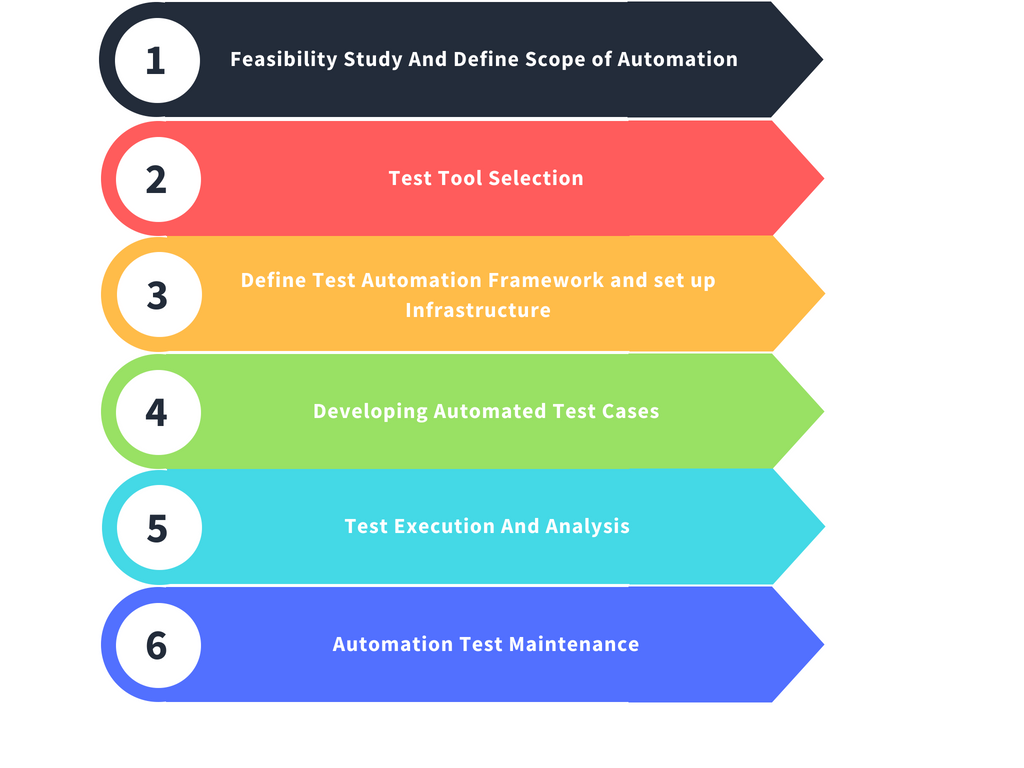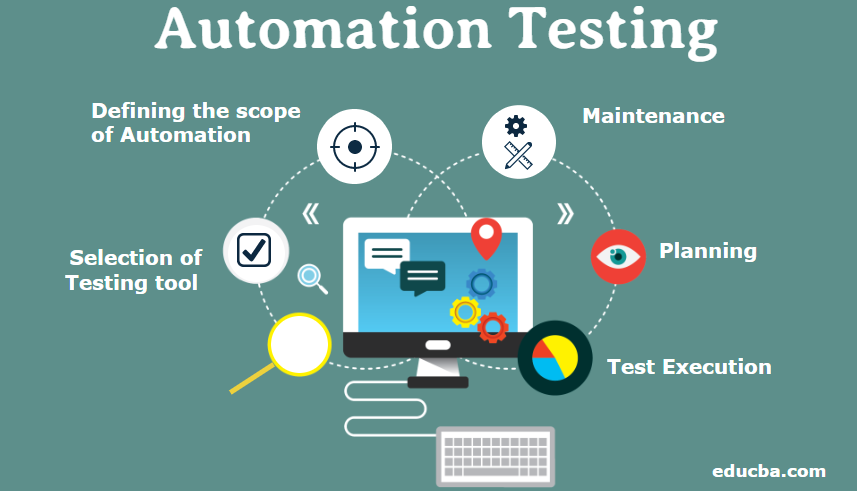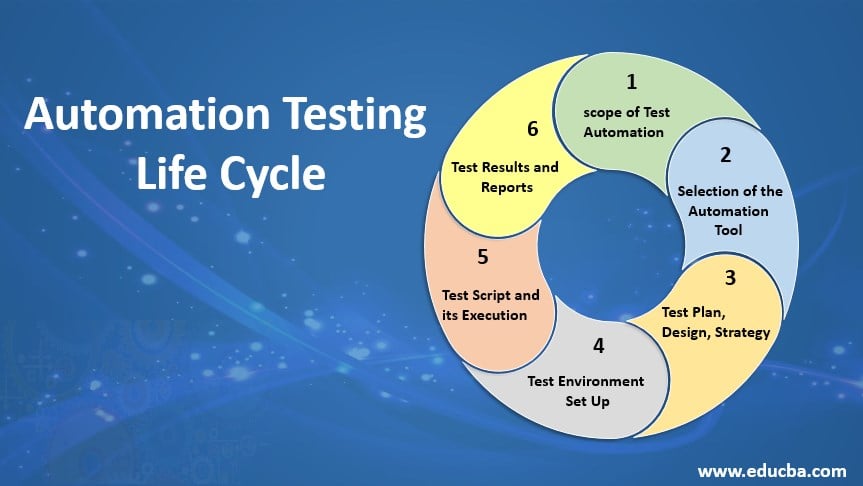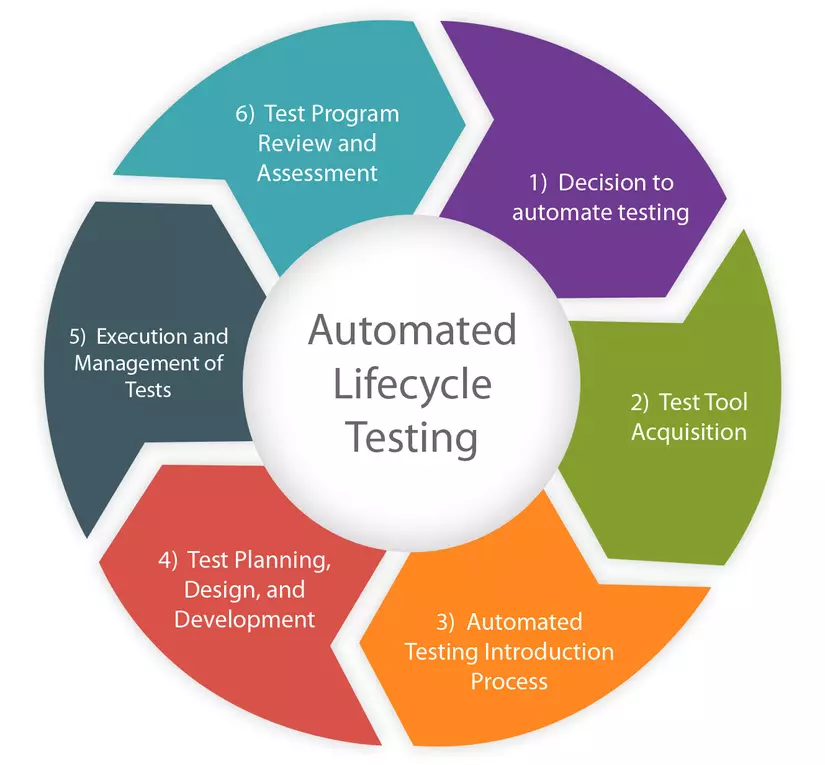In the realm of software development, How to automate software testing stands as a beacon of efficiency and precision. This comprehensive guide delves into the intricacies of automating software testing, empowering you with the knowledge and strategies to revolutionize your testing processes.
Automation in software testing has emerged as a game-changer, offering a myriad of benefits that enhance the quality and speed of software development. From time savings to improved accuracy and reliability, automation streamlines the testing process, freeing up resources for innovation and creativity.
Benefits of Automating Software Testing
Automating software testing offers numerous advantages that enhance the efficiency, accuracy, and resource utilization in the software development process.
Time-Saving Advantages
Automation significantly reduces the time required for testing, freeing up valuable resources for other tasks. Manual testing is often time-consuming and prone to human error, leading to delays in the development cycle. Automated tests, on the other hand, can be executed quickly and repeatedly, enabling faster feedback and reducing overall testing time.
Improved Accuracy and Reliability
Automated tests are highly accurate and reliable, eliminating the potential for human error that can occur during manual testing. Automation tools follow pre-defined test scripts, ensuring consistent and repeatable execution. This eliminates the risk of missed errors and improves the overall quality of the software product.
Resource Optimization
Automating software testing frees up resources that would otherwise be dedicated to manual testing. This allows teams to focus on more complex and value-added tasks, such as developing new features or improving the user experience. Automation also reduces the need for additional testers, optimizing the use of human resources.
Types of Software Testing that Can Be Automated

Automating software testing offers significant benefits, enabling organizations to enhance software quality, reduce testing time, and improve overall efficiency. Various types of software testing can be automated, providing comprehensive coverage and ensuring the reliability and performance of software applications.
Functional Testing
Functional testing verifies whether the software functions as per the specified requirements. It involves testing the core functionalities of the application, ensuring that it behaves as expected and meets the user’s needs. Automating functional testing helps reduce manual effort and increase test coverage, leading to more efficient and reliable testing.
- Benefits: Reduces testing time, increases test coverage, improves accuracy.
- Tools/Techniques: Selenium, Appium, JUnit, NUnit.
Performance Testing
Performance testing evaluates the responsiveness, stability, and scalability of the software under varying loads and conditions. It helps identify performance bottlenecks and ensures the software can handle expected usage scenarios without compromising performance. Automating performance testing enables continuous monitoring and early detection of performance issues.
- Benefits: Identifies performance bottlenecks, ensures scalability, improves user experience.
- Tools/Techniques: JMeter, LoadRunner, WebLOAD.
Security Testing
Security testing assesses the software’s vulnerability to security threats and attacks. It helps identify and mitigate potential security risks, ensuring the confidentiality, integrity, and availability of the software. Automating security testing enables regular vulnerability scanning and penetration testing, enhancing the overall security posture.
- Benefits: Identifies security vulnerabilities, improves data protection, enhances compliance.
- Tools/Techniques: OWASP ZAP, Nessus, Acunetix.
Regression Testing
Regression testing ensures that software changes do not introduce new defects or break existing functionalities. It involves re-executing previously passed test cases after code modifications. Automating regression testing enables efficient and comprehensive testing, reducing the risk of introducing bugs.
- Benefits: Prevents regression defects, reduces testing time, ensures software stability.
- Tools/Techniques: Selenium, Appium, Jenkins.
Exploratory Testing
Exploratory testing is an ad-hoc, unscripted approach to testing that involves actively exploring the software’s functionality. It helps identify hidden defects and edge cases that may be missed by scripted tests. Automating exploratory testing enables the capture and replay of test sessions, facilitating knowledge sharing and collaboration.
- Benefits: Uncovers hidden defects, improves test coverage, enhances creativity.
- Tools/Techniques: TestComplete, Tricentis Tosca, Zephyr.
Summary Table
| Type of Testing | Benefits | Tools/Techniques |
|---|---|---|
| Functional | Reduced testing time, increased test coverage, improved accuracy | Selenium, Appium, JUnit, NUnit |
| Performance | Identifies performance bottlenecks, ensures scalability, improves user experience | JMeter, LoadRunner, WebLOAD |
| Security | Identifies security vulnerabilities, improves data protection, enhances compliance | OWASP ZAP, Nessus, Acunetix |
| Regression | Prevents regression defects, reduces testing time, ensures software stability | Selenium, Appium, Jenkins |
| Exploratory | Uncovers hidden defects, improves test coverage, enhances creativity | TestComplete, Tricentis Tosca, Zephyr |
Best Practices for Automating Software Testing
- Identify suitable test cases for automation.
- Use a robust test automation framework.
- Design reusable and maintainable test scripts.
- Implement data-driven testing for flexibility.
- Integrate automated tests into the CI/CD pipeline.
- Regularly review and update automated tests.
- Monitor test results and make data-driven decisions.
Tools for Automating Software Testing

Selecting the appropriate tool for your automation testing needs is crucial. Here’s a comprehensive comparison of popular automation testing tools, highlighting their features, advantages, and drawbacks.
Popular Automation Testing Tools
| Tool | Features | Pros | Cons |
|---|---|---|---|
| Selenium |
– Open-source framework – Supports multiple programming languages – Cross-platform compatibility – Extensive community support |
– Free and widely adopted – Highly customizable – Supports web, mobile, and API testing |
– Requires coding skills – Can be complex to set up and maintain – Limited support for advanced features like AI/ML |
| Cypress |
– Fast and reliable – No-code testing for web applications – Automated screenshot capture – Time-traveling debugging |
– Easy to use and learn – Reduces testing time significantly – Ideal for front-end testing |
– Limited support for mobile and API testing – Can be slower for complex test cases – Paid subscription for advanced features |
| Appium |
– Open-source framework for mobile testing – Supports iOS and Android platforms – Cross-platform compatibility – Supports multiple programming languages |
– Comprehensive mobile testing solution – Allows testing of native, hybrid, and web applications – Supports parallel testing for faster execution |
– Requires coding skills – Can be complex to set up and maintain – May require additional tools for advanced testing scenarios |
| Robot Framework |
– -driven testing framework – Supports multiple programming languages – Cross-platform compatibility – Extensive library of s |
– Easy to learn and use – Allows non-technical testers to participate – Supports complex test scenarios |
– Limited support for web testing – Can be slower than other frameworks – May require additional tools for advanced features |
| TestComplete |
– Commercial testing tool – Supports multiple platforms and technologies – Built-in object recognition – Cross-browser compatibility |
– Comprehensive and user-friendly – Supports various testing types – Automated reporting and analysis |
– Expensive compared to open-source tools – Limited support for mobile testing – May require additional tools for advanced features |
Consider the following factors when selecting an automation testing tool:
- Type of testing required (web, mobile, API, etc.)
- Programming language proficiency
- Budget constraints
- Team size and skill level
- Support and maintenance requirements
Best Practices for Automating Software Testing

Automating software testing offers significant benefits, but it’s essential to adopt best practices to ensure effectiveness. These practices include thorough planning, well-defined test cases, effective maintenance, and a comprehensive test automation strategy.
Planning and Preparation
- Define clear objectives and scope for automation.
- Identify suitable test cases for automation.
- Establish a test automation framework and infrastructure.
Clear Test Cases and Acceptance Criteria
- Create detailed test cases with specific steps and expected results.
- Define clear acceptance criteria to determine test pass/fail.
- Review and validate test cases thoroughly before automation.
Maintaining and Updating Automated Tests
- Establish a process for regular maintenance and updates.
- Monitor test results and make necessary adjustments.
- Refactor and optimize tests to improve efficiency.
Comprehensive Test Automation Strategy
- Develop a strategy that aligns with the overall testing approach.
- Identify key automation tools and techniques.
- Establish a plan for continuous integration and deployment.
Common Automation Tools and Techniques
- Selenium, Cypress, and Robot Framework for web testing.
- Appium and Espresso for mobile testing.
- Data-driven testing and BDD (Behavior-Driven Development).
AI in Test Automation
- Benefits: Enhanced test coverage, improved accuracy, and reduced maintenance effort.
- Limitations: Complexity, cost, and limited application in certain testing scenarios.
Continuous Testing and Integration
- Integrate automated tests into the development pipeline.
- Run tests regularly to ensure code quality and stability.
- Monitor test results and trigger alerts for failures.
Managing and Reporting Test Results
- Establish a central repository for test results.
- Generate clear and concise reports for stakeholders.
- Analyze results to identify trends and improve testing efficiency.
Challenges of Automating Software Testing

While automation offers significant benefits, it also presents challenges that must be addressed for successful implementation.
One common challenge is the limitations of automation. Automation is most effective for testing repetitive, well-defined tasks. For complex or exploratory testing, manual testing remains necessary to identify edge cases and uncover unforeseen issues.
Overcoming Challenges
To overcome these challenges, consider the following strategies:
- Prioritize Test Cases: Focus on automating high-priority test cases that provide the most value and impact on software quality.
- Use a Hybrid Approach: Combine automated and manual testing to leverage the strengths of both methods.
- Invest in Training: Ensure testers are adequately trained on automation tools and best practices to maximize automation effectiveness.
– 6. Future Trends in Software Testing Automation

The future of software testing automation is shaped by emerging trends that promise to revolutionize the way software is tested. These trends include the adoption of artificial intelligence (AI), machine learning (ML), and other advanced technologies.
One key trend is the increasing use of AI and ML to automate various aspects of software testing, such as test case generation, test execution, and defect detection. AI-powered testing tools can analyze large volumes of test data, identify patterns, and make intelligent decisions, leading to more efficient and effective testing.
Impact of AI and ML on Automation
- Self-healing tests: AI-powered tests can automatically detect and repair broken tests, reducing maintenance overhead and improving test suite stability.
- Intelligent test case generation: ML algorithms can analyze historical test data and user behavior to generate optimal test cases, reducing the need for manual test case creation.
- Automated defect detection: AI algorithms can analyze test results and identify defects with high accuracy, reducing the time and effort required for manual defect detection.
Another trend is the adoption of cloud-based testing platforms. These platforms provide access to a wide range of testing tools and resources, enabling teams to perform testing in a scalable and cost-effective manner.
In addition, the future of software testing automation will also see the increasing adoption of open-source testing tools and frameworks. These tools provide a cost-effective and flexible alternative to commercial testing tools, enabling teams to customize and extend their testing capabilities.
Additional Trends
- Increased focus on security testing: As software becomes more complex and interconnected, the need for robust security testing will continue to grow.
- Adoption of DevOps practices: The integration of testing into the DevOps pipeline will lead to faster and more efficient software delivery.
- Emphasis on user experience (UX) testing: With the increasing focus on customer satisfaction, UX testing will become more critical in ensuring that software meets user expectations.
The future of software testing automation is bright, with emerging trends promising to transform the way software is tested. By embracing these trends, organizations can improve the quality, efficiency, and cost-effectiveness of their software testing efforts.
“The future of software testing automation lies in the adoption of AI, ML, and other advanced technologies that will revolutionize the way software is tested.” – Industry Expert
Real-World Examples of Software Testing Automation
Software testing automation has gained immense popularity in the industry, with numerous organizations embracing its benefits. Here are some compelling case studies that demonstrate the successful implementation of software testing automation:
Case Study: Netflix
Netflix, the streaming giant, has extensively automated its software testing process. They leverage a combination of open-source and proprietary tools, including Selenium, JUnit, and Chaos Monkey, to ensure the reliability and performance of their platform.
One of the key challenges Netflix faced was the need to test their complex video streaming infrastructure. To address this, they developed a custom testing framework called “Chaos Monkey,” which randomly introduces failures into the system to assess its resilience.
Netflix’s automation efforts have resulted in significant improvements in testing efficiency, reducing testing time by over 50%. This has allowed them to release new features and updates more frequently, while maintaining the stability and quality of their platform.
Case Study: Amazon
Amazon, the e-commerce behemoth, has also made significant investments in software testing automation. They utilize a wide range of tools, including Selenium, Cucumber, and Appium, to automate functional, performance, and security testing.
One of the challenges Amazon faced was the need to test their vast and complex product catalog. To address this, they developed a data-driven testing approach, where test cases are generated automatically based on product data.
Amazon’s automation efforts have led to a reduction in testing time by over 70%, enabling them to bring new products and features to market faster. Additionally, they have experienced a significant improvement in software quality, reducing the number of defects released into production.
Cost-Benefit Analysis of Automating Software Testing
Automating software testing can offer significant benefits, but it also involves costs. Conducting a cost-benefit analysis is crucial to determine if automation is a worthwhile investment.
Calculating Potential Return on Investment
The potential return on investment (ROI) for automating software testing can be calculated by considering the following factors:
- Reduced testing time and effort
- Improved test coverage and accuracy
- Early detection of defects, reducing the cost of fixes
- Increased software quality and reliability
The ROI can be quantified by measuring the reduction in testing costs and the increase in software quality.
Factors to Consider When Evaluating Costs and Benefits
When evaluating the costs and benefits of automation, consider the following factors:
- Cost of automation tools and infrastructure
- Cost of training and maintaining automation skills
- Time and effort required to automate tests
- Benefits of improved software quality and reduced testing costs
Making Informed Decisions
To make informed decisions about automation investments, consider the following guidelines:
- Start with a pilot project to gain experience and assess the potential benefits.
- Prioritize tests that are repetitive, time-consuming, or critical for quality.
- Use a phased approach to automation, gradually increasing the scope and complexity of automated tests.
- Monitor the results of automation and make adjustments as needed to maximize the benefits.
By carefully considering the costs and benefits of automation and following these guidelines, organizations can make informed decisions about investing in automation to improve software quality and reduce testing costs.
Integrating Automated Testing into the Software Development Lifecycle

Integrating automated testing throughout the software development lifecycle (SDLC) offers significant advantages, including improved software quality, reduced testing time, and enhanced efficiency.
Challenges of Implementing Automation in Different Development Methodologies
Implementing automation in different development methodologies poses unique challenges:
- Waterfall Model: Automation requires upfront planning, which can be difficult in this rigid methodology.
- Agile Methodologies: Frequent code changes can lead to automation maintenance challenges.
- DevOps: Collaboration between development and operations teams is crucial for effective automation.
Best Practices for Effective Integration of Automated Testing
Effective integration of automated testing involves:
- Early Integration: Start automation early in the SDLC to identify and fix issues sooner.
- Phased Approach: Implement automation gradually, starting with critical areas.
- Test Coverage Analysis: Determine which test cases can be automated and prioritize them.
- Tool Selection: Choose automation tools that align with the development methodology and team skills.
Skills and Training for Software Testing Automation
Automating software testing requires a unique blend of technical skills, knowledge, and mindset. Automation engineers must possess a deep understanding of software testing principles, programming languages, and automation tools.
To succeed in this field, aspiring automation engineers should focus on developing the following essential skills and knowledge:
Technical Skills
- Software Testing Fundamentals: Understanding the principles and practices of software testing, including test design, test execution, and defect management.
- Programming Languages: Proficiency in programming languages commonly used in automation, such as Python, Java, or JavaScript.
- Automation Tools: Familiarity with popular automation tools, such as Selenium, Appium, or Ranorex, and the ability to select and use the appropriate tool for different testing scenarios.
- Scripting and Coding: Strong scripting and coding skills to develop and maintain automated test scripts.
- Debugging and Troubleshooting: Ability to identify and resolve errors and issues in automated test scripts.
Knowledge and Mindset
- Analytical Thinking: Ability to analyze software requirements and design effective test cases.
- Problem-Solving Skills: Capacity to identify and overcome challenges in test automation.
- Attention to Detail: Meticulous attention to detail to ensure the accuracy and reliability of automated tests.
- Continuous Learning: Commitment to staying updated with the latest testing techniques and automation tools.
Training and Certification
Numerous training courses and certification programs are available to help individuals develop the skills and knowledge required for software testing automation. Some reputable options include:
- ISTQB Foundation Level Certification in Software Testing: Provides a comprehensive foundation in software testing principles and practices.
- Selenium WebDriver Certification: Focuses on using Selenium for web application testing.
- Appium Certification: Covers mobile application testing using Appium.
Building a Successful Career
To build a successful career in software testing automation, individuals should:
- Gain Practical Experience: Engage in hands-on projects to develop and execute automated tests.
- Network and Collaborate: Connect with other automation engineers and participate in industry events to expand knowledge and skills.
- Stay Updated: Continuously learn about new technologies and trends in software testing automation.
- Pursue Leadership Roles: Take on leadership responsibilities to guide and mentor junior automation engineers.
Ethical Considerations in Automating Software Testing: How To Automate Software Testing

As software testing automation gains prominence, it is crucial to address the ethical implications associated with its use. Automating testing introduces potential biases and limitations that require careful consideration to ensure fair and unbiased testing practices.
One ethical concern is the impact on human testers. Automation may lead to job displacement or reduced responsibilities for manual testers. It is essential to plan for this transition ethically, providing training and support for testers to adapt to the changing landscape.
Potential Biases and Limitations
Automated testing tools rely on algorithms and data to make decisions. If the data used for training or testing is biased, the resulting tests may perpetuate or amplify those biases. This can lead to unfair or discriminatory outcomes, especially when testing systems that impact sensitive areas such as hiring or lending.
Best Practices for Fair Testing
To mitigate biases and ensure fair testing, it is important to follow best practices for data collection and analysis. This includes using diverse and representative datasets, carefully examining test results for anomalies, and implementing measures to prevent discrimination.
Ethical Guidelines
As the software testing profession evolves, it is essential to develop ethical guidelines for the responsible use of testing tools. These guidelines should address issues such as data privacy, bias mitigation, and the impact on human testers. By adhering to these principles, we can ensure that software testing automation is used ethically and responsibly.
Glossary of Software Testing Automation Terms
Software testing automation involves a wide range of specialized terms. Understanding these terms is essential for effective communication and efficient automation implementation.
This comprehensive glossary provides clear definitions and explanations of key terms, along with examples and illustrations for enhanced understanding.
Test Automation Framework, How to automate software testing
- A set of tools, libraries, and processes that provide a structured approach to automating software testing.
- Examples: Selenium, Robot Framework, TestNG
Test Case
- A set of steps that define a specific test scenario.
- Example: “Verify that the login button is visible and functional.”
Test Suite
- A collection of test cases grouped together based on functionality, feature, or other criteria.
- Example: “Login Test Suite,” “Regression Test Suite”
Test Script
- A program or code that executes a test case automatically.
- Example: A Python script using the Selenium WebDriver to test a web application
Test Runner
- A tool or framework that executes test scripts and manages the execution process.
- Examples: Maven Surefire, Gradle Test Runner
Test Data
- Data used to test the software application.
- Example: A set of user credentials for testing a login feature
Test Environment
- The hardware, software, and network configuration used to run the tests.
- Example: A virtual machine running a specific operating system and browser version
Test Report
- A document that summarizes the results of the automated tests.
- Example: A report generated by a test runner, providing details of passed and failed tests
Continuous Integration (CI)
- A software development practice where code changes are automatically integrated and tested regularly.
- Example: Using Jenkins or CircleCI to run automated tests every time a developer pushes code changes
Continuous Delivery (CD)
- An extension of CI, where automated tests are used to ensure that code changes can be safely deployed to production.
- Example: Using a pipeline tool like Jenkins or Azure DevOps to automatically deploy code changes to a production environment
Regression Testing
- Testing conducted after code changes to ensure that existing functionality is not affected.
- Example: Running automated tests on a new software version to verify that core features still work as expected
Smoke Testing
- Basic testing performed before detailed testing to ensure that the software is stable enough to proceed with further testing.
- Example: Verifying that a web application loads and basic navigation works
Share a curated list of resources for learning about software testing automation.
Software testing automation is a rapidly growing field, and there are many resources available to help you learn about it. Whether you’re a beginner or an experienced tester, there’s something for everyone.
Here is a curated list of resources that I recommend:
- Books:
- Selenium WebDriver: Up and Running by Jason Huggins
- Mastering Software Testing with Python by Hemant Jain
- Software Testing Automation: A Beginner’s Guide by Petros Koutoupis
- Articles:
- Software Testing Automation by Guru99
- Automation Testing by Software Testing Help
- Software Testing Automation by Software Testing Academy
- Tutorials:
- Online courses:
- Software Testing Automation Specialization by Coursera
- Software Testing Automation with Selenium WebDriver by Udemy
- Software Testing Automation Fundamentals by Pluralsight
Choosing the Right Resources
The best resources for you will depend on your learning style and needs. If you’re a beginner, I recommend starting with a book or tutorial. Once you have a basic understanding of software testing automation, you can start exploring more advanced resources, such as articles and online courses.
Wrap-Up

As we navigate the ever-evolving landscape of software testing, automation continues to push the boundaries of efficiency and effectiveness. By embracing the principles Artikeld in this guide, you can harness the power of automation to elevate your software testing practices, ensuring the delivery of high-quality, reliable software.
Commonly Asked Questions
What are the key benefits of automating software testing?
Automation offers significant advantages, including time savings, improved accuracy and reliability, and the ability to free up resources for other tasks.
What types of software testing can be automated?
A wide range of software testing types can be automated, including functional, performance, security, regression, and exploratory testing.
What are some best practices for automating software testing?
Effective automation practices include planning and preparation, clear test cases and acceptance criteria, and regular maintenance and updates.

